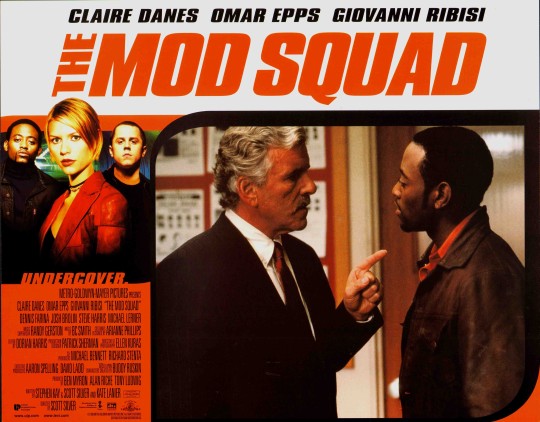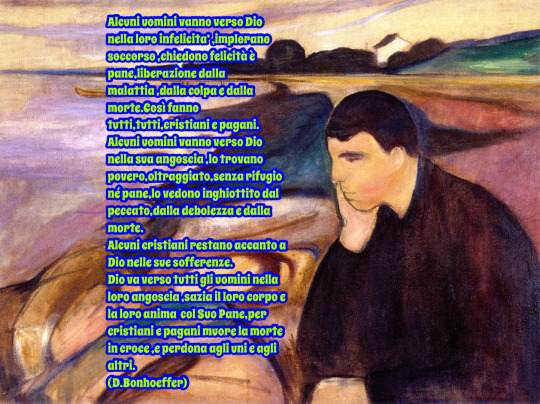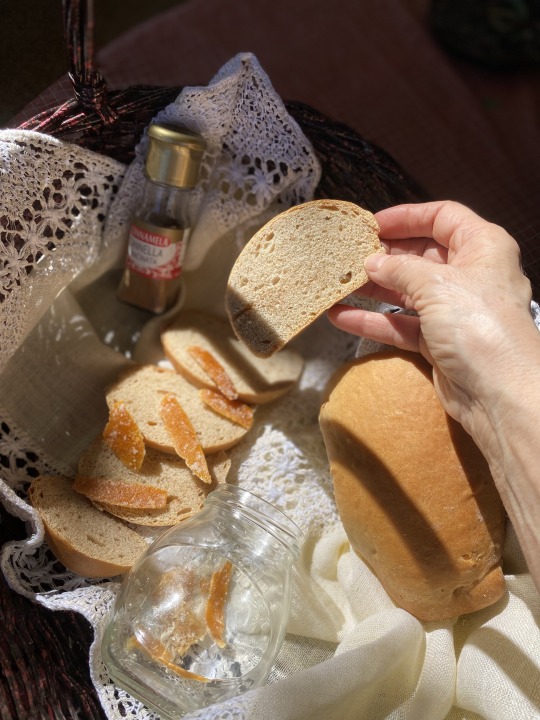#Giovanni Farina
Text
ROF 2022: OTELLO
Enea Scala (Otello) i Antonino Siragusa (Iago). Fotogrtafia gentilesa del ROF (Facebook)
Quan els designis celestials van decidir ajuntar al Nàpols de principis del segle XIX al compositor Rossini, a l’empresari Barbaja i a Isabella Colbran, l’insigne soprano del moment al capdavant d’una companyia de cant disponible als teatres de la cort que comptava amb noms tan il·lustres com Andrea Nozzari,…

View On WordPress
#Adriana Di Paola#Antonino Siragusa#Antonio Garés#Coro del Teatro Ventidio Basso#Dmitry Korchak#Eleonora Buratto#Enea Scala#Evgeny Stanvinsky#Gioacchino Rossini#Giovanni Farina#Julian Henao González#Orchestra Simfonica Nazionale della Rai#Otello#Rosetta Cucchi#Yves Abel
0 notes
Photo

SAVING PRIVATE RYAN 1998
You can tell her that when you found me, I was with the only brothers I had left. And that there was no way I was deserting them. I think she'd understand that.
#saving private ryan#1998#tom hanks#edward burns#tom sizemore#jeremy davies#vin diesel#adam goldberg#barry pepper#giovanni ribisi#matt damon#dennis farina#ted danson#harve presnell#bryan cranston#david wohl#nathan fillion#paul giamatti#ryan hurst#max martini#leland orser
35 notes
·
View notes
Text










The Mod Squad (1999)
7 notes
·
View notes
Photo

The Mod Squad, US lobby card. 1999
#Lobby Cards#submission#The Mod Squad#Scott Silver#Claire Danes#Omar Epps#Giovanni Ribisi#Dennis Farina#Lobby Card
0 notes
Text
PANNOCIATO E PÀ NNOCIATO
Festa dell’esaltazione della Croce insieme alle tradizioni popolari a Petriolo e dintorni
Pannociato
Pà nnociato ricetta salata con noci uva pecorino
Pannociato dolce
Pà nnociato alle noci
Pà nnociato alle noci e pecorino

View On WordPress
#costumanze marchigiane#farina 0 bio#festa dell’esaltazione della Croce#Giovanni Ginobili#marche#noci#pane alle noci#pannociato#pà nnociato#pecorino#Petriolo#Pitrió&039; mmia#Saltarello#tradizione
0 notes
Photo










1953 Siata 208S Spider
Siata is an acronym for Società Italiana Auto Trasformazione Accessori, the Turin-based firm founded in 1926 by Giorgio Ambrosini, and which ceased production in 1970.
Much like Abarth, Siata developed its business by manufacturing performance parts for Fiat, gaining greater exposure after World War II as motorsport came back to the fore in Europe and the Americas. As 750 cc-powered race cars grew in displacement, Siata-modified vehicles gained prominence and the attention of stateside racers like Briggs Cunningham and Ernie McAfee. The latter was a Los Angeles–based importer who drove one of the first Siata-enhanced examples in the 1953 Carrera Panamericana race.
Fiat, meanwhile, had developed a 2.0-liter V-8 engine for its luxury sports car, the Otto Vu. While only 49 examples of that model were constructed, there remained additional Fiat V-8 engines that were acquired by Siata to power its new 208S Spider, unveiled in 1952. Only 33 examples were bodied by Carrozzeria Rocca Motta, of Turin, from 1953 to 1955. The car was not only powerful for its day, but supremely beautiful.
Designed by Giovanni Michelotti, these perfectly proportioned roadsters defined the iconic look of the era’s rugged sports cars. Equally stunning was the 208 CS, a coupe version of which only 18 were made, 11 bodied by Balbo and seven by Stabilimenti Farina. Topped with twin Weber carburetors and tuned by Siata, Fiat’s 2.0-liter OHV alloy V-8 engine develops more than 125 hp at 6,000 rpm, which is good enough to give the car a top speed of nearly 125 mph.
#art#design#sportcars#sportcar#luxurycars#luxurycar#vintagecars#vintagecar#siata#fiat#italy#giorgio ambrosini#spider#1953#giovanni michelotti#roadster#208 CS#siata 208 CS
1K notes
·
View notes
Note
do you know any other perfumes worn by historical figures like otma? 🩷
Elisabeth of Austria wore Creed Fantasia De Fleurs.
Obviously we don't know what Anne Boleyn smelled like (AN ANGEL!), but there is some evidence that she had a fondness for rose-water and even had several bottles of it in her inventory.
Marie Antoinette was mad for perfume (there are entire books about this), and you can still buy her custom blend of Parfum du Trianon by her very own personal perfumer, Jean-Louis Fargeon. She even packed it for Varennes! (Louis waiting for her to get ready like 😒.) Her beloved Le Jardin Secret has been repackaged as Black Jade by Lubin, and you can buy it here.
Marie-Thérèse also wore Lubin.
Napoleon had François Rancé create Joséphine for Guess Who. To absolutely no one's surprise, it's like an explosion of rose petals.
Victoria was a big fan of Fleurs de Bulgarie by Creed.
Madame du Barry‘s favourite scent was Aqua Mirabilis by Giovanni Maria Farina.
Creed's Jasmin Imperatrice Eugenie was created (shockingly enough) for my beloved Empress Eugenie.
STARLET SCENTS:
Grace Kelly walked down the aisle in Creed Fleurissimo.
Givenchy created L'Interdit for Audrey in 1957, but she also wore Creed Spring Flower later on - another perfume made just for her!
Carole Lombard wore Casma by Caswell-Massey during her flapper era.
Pattie Boyd recorded in her Letter from London for 16 Magazine that she wore Jicky by Guerlain during her dolly bird days. (Also a favorite of Sharon Tate!)
LITERARY LADIES:
Zelda Fitzgerald wore Salud by Schiaparelli, describing it as "violets and lilies and pink beauty."
And just for fun: the fictional Linda Radlett wears Après L'Ondée by Guerlain, and knowing Nancy Mitford, I'm pretty certain this means she wore it herself.
💐🩷
127 notes
·
View notes
Text

STORIA DEL CORNETTO: INTERESSANTISSIMO!!!
La tipica forma a mezzaluna viene, in modo forse leggendario, correlata alla battaglia di Vienna del 1683 che pose fine all'assedio della città da parte dell'Impero Ottomano. La città era stata posta sotto assedio il 14 luglio del 1683 da 140.000 turchi guidati dal gran visir Mustafa pascià. L'assalto turco fu durissimo e molti furono i tentativi di penetrare in città. Si narra infatti che per conquistare definitivamente Vienna, abbattendo le sue poderose mura, l'esercito ottomano andava scavando nottetempo delle gallerie sotterranee al di sotto di queste per minarle e farne saltare così le fondamenta. I rumori delle pale e dei picconi furono udite dagli unici lavoratori svegli a notte fonda: i fornai, che diedero tempestivamente l'allarme sventando l'imminente pericolo. L'11 settembre 1683 Giovanni III Sobieski, re di Polonia, giunse a Vienna guidando la coalizione cristiana e i turchi vennero rovinosamente sconfitti. Per celebrare l'importante vittoria Giovanni III chiese ai panettieri di ideare un dolce che ricordasse l'avvenimento. Secondo la tradizione sembra sia stato un fornaio di nome Peter Wendler a inventare la specialità a forma di mezzaluna. La ricetta era simile a quella attualmente usata per il cornetto: uova, farina, burro, zucchero, lievito, acqua tiepida. La particolare forma rimandava chiaramente al simbolo della bandiera turca: la nuova golosità venne chiamata kipferl, mezzaluna in tedesco proprio come in francese il termine croissant. Mangiando il kipferl simbolicamente si mangiava il turco.
La specialità si diffuse in Italia e più specificatamente in Veneto subito dopo il 1683, grazie agli intensi rapporti commerciali tra l'allora Serenissima Repubblica di Venezia e Vienna. Bisognerà attendere invece il 1770 perché anche la Francia, con il matrimonio tra l'austriaca Maria Antonietta e il futuro re Luigi XVI, scopra il cornetto. La sua ricetta venne modificata dai pasticceri di Versailles, che lo arricchirono di burro e lo battezzarono croissant.
Nel 1797, con il trattato di Campoformio e successivamente con l'istituzione del Lombardo Veneto, il kipferl o cornetto, insieme ai krapfen e al gulasch, accrebbe ulteriormente la propria popolarità. L'arte di prepararli divenne patrimonio di maestri fornai veneti.
8 notes
·
View notes
Text

4.11.23
As today is my day off, I thought I would share another fanfiction character. This is still my husband's SWTOR character. He has given me permission to write for him.

question provided by @oc-a-day.
What’s your OC’s immediately family like and their dynamic? Who do they get along with most? Least?


Adaki has the following immediate family:
Aatana - Daughter
Cynthia Prescost - Wife
Ellese - Daughter - in - Law
Gor'en - Son
Kymor - Son
Zhorrid - Daughter
The Godfather and the real-life Borgias inspired the Arturis family. Like both Vito Corleone and Rodrigo Borgia settled in a foreign country, Adaki Arturis, later known as Darth Noktis, settled in on a foreign planet where he needed to settle and raise his three children: Aatana, Gor'en, and Zhorrid.
Adaki created his power-center in Kaas City on Dromund Kaas and had a host of homes and apartments. Rodrigo and Vito centered their power centers around the Vatican and New York.
Below, I go into depth on what inspired each of the children.
AATANA ARTURIS
When designing Aatana’s personality, I wanted someone who could be used as a political pawn by her father. Aatana would have several failed engagements as Noktis dominated his eldest daughter’s life. Her first engagement was to a useless and abusive Sith lord, who would betray the Arturis family, much like Giovanni Sforza had done to Alexander VI. Aatana, herself, would murder this Sith.
Aatana was in a brief relationship with the bounty hunter: Channas. This fizzled out as she became tired of sneaking around. It is no wonder why Aatana spied on Adaki for her mother, Farina.
GOR'EN ARTURIS
Like Kymor, Gor’en was inspired by Michael Coreleon. While he was at odds with his father most of the time, he would help his family out of obligation, protecting his siblings. Gor’en wants nothing to do with the Force, as he describes it as “putting on a wet sock” when he used the Force to stabilize Ellese’s life until he and Aric Jorgan could get her to a kolto tank after Noktis attacked them on Ord Mantell.
All that changed when Cynthia, Ellese, and the four-year-old Kymor came for his help on Risha. They needed his help to rescue his father. He didn’t show it, but he was overcome with emotion and pledged to help Ellese and his younger brother. He did not desire to lead the family, leaving that to Kymor, but he wanted to join the fight.
Noktis gets along least with Gor'en. He views him as a shameful secret, someone who deserted the Sith academy, and, therefore, deserves death.
KYMOR ARTURIS
Kymor is inspired by Michael Corleone and Cesare Borgia. As soon as Darth Noktis and Cynthia disappear together on Oricon, Kymor takes over the family. It is during this time that it is revealed that he is a true leader. He is very intelligent, inheriting that from both of his parents. Kymor shows no emotions, except to Romina, and shares no secrets with anyone. He is always one step ahead of his enemies. He is one of the only children that Noktis is proud of.
ZHORRID
My interpretation of Zhorrid was inspired somewhat by Lucrezia Borgia. Until Cynthia and Noktis conceived Kymor, she was the youngest member of the Arturis Family. She is the youngest daughter. Unlike Aatana, Noktis did not use her as a political pawn.
Until she became a Sith Lord, Zhorrid was the apple of her father’s eye. He would hire a tutor, so she could have singing lessons. He would set up an event in Kaas City for her only. Her singing would make all in attendance cry. Noktis would commission several paintings of Zhorrid.
Much like with Aatana, Gor’en, and Kymor, Noktis’ parenting changed when Zhorrid was admitted into the Sith Academy. He became more critical of her and the damage that she would do to his legacy.
All of his children needed to pass a “Rite of Courage.” Noktis truly believes in the survival of the fittest, but he watches over his children who are in the Academy, hoping to embolden those children. He’s teaching his children to be strong Sith. None save Kymor realizes this.
2 notes
·
View notes
Photo

1953 Siata 208S Spider Siata is an acronym for Società Italiana Auto Trasformazione Accessori, the Turin-based firm founded in 1926 by Giorgio Ambrosini, and which ceased production in 1970. Much like Abarth, Siata developed its business by manufacturing performance parts for Fiat, gaining greater exposure after World War II as motorsport came back to the fore in Europe and the Americas. As 750 cc-powered race cars grew in displacement, Siata-modified vehicles gained prominence and the attention of stateside racers like Briggs Cunningham and Ernie McAfee. The latter was a Los Angeles–based importer who drove one of the first Siata-enhanced examples in the 1953 Carrera Panamericana race. Fiat, meanwhile, had developed a 2.0-liter V-8 engine for its luxury sports car, the Otto Vu. While only 49 examples of that model were constructed, there remained additional Fiat V-8 engines that were acquired by Siata to power its new 208S Spider, unveiled in 1952. Only 33 examples were bodied by Carrozzeria Rocca Motta, of Turin, from 1953 to 1955. The car was not only powerful for its day, but supremely beautiful.Designed by Giovanni Michelotti, these perfectly proportioned roadsters defined the iconic look of the era’s rugged sports cars. Equally stunning was the 208 CS, a coupe version of which only 18 were made, 11 bodied by Balbo and seven by Stabilimenti Farina. Topped with twin Weber carburetors and tuned by Siata, Fiat’s 2.0-liter OHV alloy V-8 engine develops more than 125 hp at 6,000 rpm, which is good enough to give the car a top speed of nearly 125 mph.
#art#design#sportcars#sportcar#luxurycars#luxurycar#vintagecars#vintagecar#siata#fiat#italy#giorgio ambrosini#spider#1953#giovanni michelotti#roadster#208 CS#siata 208 CS
5 notes
·
View notes
Text
Holidays 3.4
Holidays
Angelina Asteroid Day
Benjamin Harrison Day (Indiana)
Brain Injury Awareness Day
Brooke Davis Day
Casmir’s Day (Lithuania, Poland)
Catherine O’Hara Day
Charter Day (Pennsylvania)
Courageous Followers Day
Dance the Waltz Day
Do Something Day
Festival of Pirate Utopias
Game Master’s Day
Global Day of the Engineer
Guam History and Chamorro Heritage Day (Guam)
Healing From the Inside Out Day
Hedge Mustard Day (French Republic)
Hot Springs National Park Day
Holy Experiment Day
Hug A G.I. Day (a.k.a. Hug a Member of the Military Day)
Inauguration Day (US; Original Date)
International GM Appreciation Day (a.k.a. Game Master’s Day)
International HPV Awareness Day
International Scrapbooking Industry Day
James Ronald Webster Day (Anguilla)
March Forth — Do Something Day
March Forth Racial Healing & Reconciliation Holiday
Marching Music Day (a.k.a. Marching Band Day)
Martyrs’ Day (Malawi)
Militia Day (Belarus)
National Backcountry Ski Day
National Grammar Day
National Ida Day
National Marching Arts Day
National Quinton Day
National Ray Day
National Safety Day (India)
National Sons Day
National Waltz Day
Old Inauguration Day (US)
Racial Healing and Reconciliation Day
Rowlf the Dog Day
Sultan’s Coronation Day (Malaysia)
This Way To the Egress Day
Toy Soldier Day
U.S. Congress Day
Weird Pride Day
World Day of the Fight Against Sexual Exploitation
World Engineering Day for Sustainable Development
World Evanescence Day
World Information Architecture Day
World Obesity Day
Zhonghe Festival (China)
Food & Drink Celebrations
American Tavern Day
Cadbury Chocolate Day
National Pound Cake Day
National Snack Day
1st Monday in March
Black Mental Health Day (Canada) [1st Monday]
Casmir Pulaski Day (Indiana) [1st Monday]
COVID-19 Memorial Day (Arizona) [1st Monday]
Endometriosis Awareness Week [1st Full Week]
Fun Facts About Names Day [Monday of Name Week]
International Badge Day [1st Monday]
Labour Day (Western Australia) [1st Monday]
Magellan Day (a.k.a. Discovery Day; Guam) [1st Monday]
National COVID-19 Victims & Survivors Memorial Day [1st Monday]
World Boarding Staff Day [1st Monday]
World Tennis Day [1st Monday]
Weekly Holidays beginning March 4 (1st Week)
Groundwater Awareness Week [1st Full Week]
National Aardvark Week [1st Full Week]
National School Breakfast Week (U.S.) [thru 3.8]
Newspaper in Education Week [1st Full School Week]
No More Week [Week including 3.8]
Read An E-Book Week [1st Full Week]
Women of Aviation Worldwide Week [1st Full Week]
World Orphan Week [1st Full Week]
Words Matter Week [1st Full Week]
Independence & Related Days
Liberation Day (Bulgaria)
Vermont Statehood Day (#14; 1791)
Festivals Beginning March 4, 2024
Paralympic Winter Games (Beijing, China) [thru 3.14]
United Solo Theatre Festival (New York, New York) [thru 4.28]
Feast Days
Adrian of Nicomedia (Christian; Saint) [brewers] *
Afro Basaldella (Artology)
The Anestheria (Festival of Flowers; Ancient Greece)
Basinus, Bishop of Trier (Christian; Saint)
Bulwar-Lytton Day (Church of the SubGenius; Saint)
Casimir, Prince of Poland (Christian; Saint) [Lithuania]
Church of All Worlds Day (Everyday Wicca)
Feast of Ra in His Barge at Heliopolis (Ancient Egypt)
Feast of Rhiannon (Celtic/Welsh Mother Goddess)
Feast of Tou Tei (Earth God; Macau) [2nd Day of 2nd Lunar Month]
Felix of Rhuys (Christian; Saint)
Giovanni Antonio Farina (Catholic Church)
GM Appreciation Day (a.k.a. Game Master Appreciation Day)
Henry Raeburn (Artology)
Humbert III, Count of Savoy (Roman Catholic Church; Blessed)
James Ellroy (Writerism)
Kano Tanyu (Artology)
Lucius, Pope (Christian; Martyr)
Mad March Hares Day (Starza Pagan Book of Days)
Maha Shivaratri (Great Night of Shiva, Vigil & Feast for Transendence; Hinduism)
March Dryads’ Display (Shamanism)
March Forth and Demand Something Day (Pastafarian)
Media Hiems II (Pagan)
Paul Cuffee (Episcopal Church)
Peter of Pappacarbone (Christian; Saint)
Random Day (Pastafarian)
Rowlf the Dog (Muppetism)
Smerdley (Muppetism)
Sun Sacrifice Day (Ancient Egypt)
Thales (Positivist; Saint)
Three Absences Day (Celtic Book of Days)
William Dobson (Artology)
Zoltán Meszlényi (Christian; Saint)
Lucky & Unlucky Days
Fatal Day (Pagan) [6 of 24]
Shakku (赤口 Japan) [Bad luck all day, except at noon.]
Tycho Brahe Unlucky Day (Scandinavia) [12 of 37]
Premieres
The Adjustment Bureau (Film; 2011)
Babette’s Feast (Film; 1988)
The Batman (Film; 2022)
The Bridge at Andau James A. Michener (Historical Novel; 1957)
Cinderella (Animated Disney Cartoon; 1950)
Be Cool (Film; 2005)
The Chase (Film; 1994)
Chocolat, by Joanne Harris (Novel; 1999)
Cinderella (Animated Disney Film; 1950)
Deathworld, by Harry Harrison (Novel; 1960)
Fallen, by Evanescence (Album; 2003)
Flip’s Luncheon (Ub Iwerks Cartoon; 1933)
Gandy the Goose (Terrytoons Cartoon; 1938)
The Hams That Couldn’t Be Cured (Swing Symphony; 1942)
Here’s Little Richard, by Little Richard (Album; 1957)
Hiroshima, by John Hersey (Novel; 1946)
London Has Fallen (Film; 2016)
The Loneliness of the Long-Distance Runner, by Alan Sillitoe (Novel; 1959)
Monster in the Monastery (Animated TV Show;Jonny Quest #25; 1965)
No, by Meghan Trainor (Song; 2016)
Nosferatu (Silent Film; 1922)
Phoney Booths, Parts 3 & 4 (Underdog Cartoon, S3, Eps. 39 & 40; 1967)
Pluto’s Surprise Package (Disney Cartoon; 1949)
Police Squad! (TV Series; 1982)
Rango (Animated Film; 2011)
’Round About Midnight, by Miles Davis (Album; 1957)
The Scarlet Pumpernickel (WB LT Cartoon; 1950)
Scooby-Doo! and the Legend of the Vampire (WB Animated Film; 2003)
Sherlock Holmes in “A Study in Scarlet” (Novel; 1881)
Hold ‘Em Ozzie (Oswald the Lucky Rabbit; 1929)
The SpongeBob Movie on the Run (Animated Film; 2021)
Surfing’ U.S.A., by The Beach Boys (Song; 1963)
Swan Lake, by Pyotr Ilyich Tchaikovsky (Ballet; 1877)
Symphony No. 2, a.k.a. Resurrection, by Gustav Mahler (Symphony; 1895)
Tender Mercies (Film; 1983)
Up Periscope (Film; 1959)
The Voice of Frank Sinatra, by Frank Sinatra (Album; 1946)
Wait ’Till the Sun Shines (Betty Boop Cartoon; 1932)
Waterloo, by Abba (Song; 1974)
We're Only in It for the Money, by Frank Zappa & The Mothers of Invention (Album; 1968)
Whiskey Tango Foxtrot (Film; 2016)
Young and Healthy (WB MM Cartoon; 1933)
The Young Indiana Jones Chronicles (TV Series; 1992)
Zootopia (Animated Film; 2016)
Today’s Name Days
Edwin, Humbert, Kasimir (Austria)
Bozhidar, Bozhidara, Dora, Gerasim, Teodor, Teodora, Todor (Bulgaria)
Eugen, Kazimir, Miro, Natko (Croatia)
Stela (Czech Republic)
Adrianus (Denmark)
Almar, Eimar, Elmar, Elmer, Elmet, Elmo (Estonia)
Ari, Arsi, Atro (Finland)
Casimir (France)
Edwin, Humbert, Kasimir (Germany)
Gerasimos, Theodoros (Greece)
Kázmér (Hungary)
Casimiro, Lucio, Nestore, Umberto, Urbano (Italy)
Alise, Auce (Latvia)
Daina, Daugvydas, Kazimieras, Vaclava (Lithuania)
Ada, Adrian (Norway)
Adrian, Adrianna, Arkadiusz, Arkady, Eugeniusz, Kazimierz, Lew, Lucja, Łucja, Lucjusz, Wacław, Wacława (Poland)
Gherasim, Teodor (Romania)
Kazimír (Slovakia)
Casimiro (Spain)
Adrian, Adriana (Sweden)
Julianna, Julianna (Ukraine)
Casimir, Humbert, Humberto, Kasimir, Kasimira, Placida, Placidia (USA)
Today is Also…
Day of Year: Day 64 of 2024; 302 days remaining in the year
ISO: Day 1 of week 10 of 2024
Celtic Tree Calendar: Nuin (Ash) [Day 16 of 28]
Chinese: Month 1 (Bing-Yin), Day 23 (Bing-Yin)
Chinese Year of the: Dragon 4722 (until January 29, 2025)
Hebrew: 23 Adair I 5784
Islamic: 22 Sha’ban 1445
J Cal: 3 Green; Threesday [3 of 30]
Julian: 19 February 2024
Moon: 38%: Waning Gibbous
Positivist: 8 Aristotle (3rd Month) [Solon]
Runic Half Month: Tyr (Cosmic Pillar) [Day 9 of 15]
Season: Winter (Day 74 of 89)
Week: 1st Week of March
Zodiac: Pisces (Day 14 of 30)
1 note
·
View note
Text
Holidays 3.4
Holidays
Angelina Asteroid Day
Benjamin Harrison Day (Indiana)
Brain Injury Awareness Day
Brooke Davis Day
Casmir’s Day (Lithuania, Poland)
Catherine O’Hara Day
Charter Day (Pennsylvania)
Courageous Followers Day
Dance the Waltz Day
Do Something Day
Festival of Pirate Utopias
Game Master’s Day
Global Day of the Engineer
Guam History and Chamorro Heritage Day (Guam)
Healing From the Inside Out Day
Hedge Mustard Day (French Republic)
Hot Springs National Park Day
Holy Experiment Day
Hug A G.I. Day (a.k.a. Hug a Member of the Military Day)
Inauguration Day (US; Original Date)
International GM Appreciation Day (a.k.a. Game Master’s Day)
International HPV Awareness Day
International Scrapbooking Industry Day
James Ronald Webster Day (Anguilla)
March Forth — Do Something Day
March Forth Racial Healing & Reconciliation Holiday
Marching Music Day (a.k.a. Marching Band Day)
Martyrs’ Day (Malawi)
Militia Day (Belarus)
National Backcountry Ski Day
National Grammar Day
National Ida Day
National Marching Arts Day
National Quinton Day
National Ray Day
National Safety Day (India)
National Sons Day
National Waltz Day
Old Inauguration Day (US)
Racial Healing and Reconciliation Day
Rowlf the Dog Day
Sultan’s Coronation Day (Malaysia)
This Way To the Egress Day
Toy Soldier Day
U.S. Congress Day
Weird Pride Day
World Day of the Fight Against Sexual Exploitation
World Engineering Day for Sustainable Development
World Evanescence Day
World Information Architecture Day
World Obesity Day
Zhonghe Festival (China)
Food & Drink Celebrations
American Tavern Day
Cadbury Chocolate Day
National Pound Cake Day
National Snack Day
1st Monday in March
Black Mental Health Day (Canada) [1st Monday]
Casmir Pulaski Day (Indiana) [1st Monday]
COVID-19 Memorial Day (Arizona) [1st Monday]
Endometriosis Awareness Week [1st Full Week]
Fun Facts About Names Day [Monday of Name Week]
International Badge Day [1st Monday]
Labour Day (Western Australia) [1st Monday]
Magellan Day (a.k.a. Discovery Day; Guam) [1st Monday]
National COVID-19 Victims & Survivors Memorial Day [1st Monday]
World Boarding Staff Day [1st Monday]
World Tennis Day [1st Monday]
Weekly Holidays beginning March 4 (1st Week)
Groundwater Awareness Week [1st Full Week]
National Aardvark Week [1st Full Week]
National School Breakfast Week (U.S.) [thru 3.8]
Newspaper in Education Week [1st Full School Week]
No More Week [Week including 3.8]
Read An E-Book Week [1st Full Week]
Women of Aviation Worldwide Week [1st Full Week]
World Orphan Week [1st Full Week]
Words Matter Week [1st Full Week]
Independence & Related Days
Liberation Day (Bulgaria)
Vermont Statehood Day (#14; 1791)
Festivals Beginning March 4, 2024
Paralympic Winter Games (Beijing, China) [thru 3.14]
United Solo Theatre Festival (New York, New York) [thru 4.28]
Feast Days
Adrian of Nicomedia (Christian; Saint) [brewers] *
Afro Basaldella (Artology)
The Anestheria (Festival of Flowers; Ancient Greece)
Basinus, Bishop of Trier (Christian; Saint)
Bulwar-Lytton Day (Church of the SubGenius; Saint)
Casimir, Prince of Poland (Christian; Saint) [Lithuania]
Church of All Worlds Day (Everyday Wicca)
Feast of Ra in His Barge at Heliopolis (Ancient Egypt)
Feast of Rhiannon (Celtic/Welsh Mother Goddess)
Feast of Tou Tei (Earth God; Macau) [2nd Day of 2nd Lunar Month]
Felix of Rhuys (Christian; Saint)
Giovanni Antonio Farina (Catholic Church)
GM Appreciation Day (a.k.a. Game Master Appreciation Day)
Henry Raeburn (Artology)
Humbert III, Count of Savoy (Roman Catholic Church; Blessed)
James Ellroy (Writerism)
Kano Tanyu (Artology)
Lucius, Pope (Christian; Martyr)
Mad March Hares Day (Starza Pagan Book of Days)
Maha Shivaratri (Great Night of Shiva, Vigil & Feast for Transendence; Hinduism)
March Dryads’ Display (Shamanism)
March Forth and Demand Something Day (Pastafarian)
Media Hiems II (Pagan)
Paul Cuffee (Episcopal Church)
Peter of Pappacarbone (Christian; Saint)
Random Day (Pastafarian)
Rowlf the Dog (Muppetism)
Smerdley (Muppetism)
Sun Sacrifice Day (Ancient Egypt)
Thales (Positivist; Saint)
Three Absences Day (Celtic Book of Days)
William Dobson (Artology)
Zoltán Meszlényi (Christian; Saint)
Lucky & Unlucky Days
Fatal Day (Pagan) [6 of 24]
Shakku (赤口 Japan) [Bad luck all day, except at noon.]
Tycho Brahe Unlucky Day (Scandinavia) [12 of 37]
Premieres
The Adjustment Bureau (Film; 2011)
Babette’s Feast (Film; 1988)
The Batman (Film; 2022)
The Bridge at Andau James A. Michener (Historical Novel; 1957)
Cinderella (Animated Disney Cartoon; 1950)
Be Cool (Film; 2005)
The Chase (Film; 1994)
Chocolat, by Joanne Harris (Novel; 1999)
Cinderella (Animated Disney Film; 1950)
Deathworld, by Harry Harrison (Novel; 1960)
Fallen, by Evanescence (Album; 2003)
Flip’s Luncheon (Ub Iwerks Cartoon; 1933)
Gandy the Goose (Terrytoons Cartoon; 1938)
The Hams That Couldn’t Be Cured (Swing Symphony; 1942)
Here’s Little Richard, by Little Richard (Album; 1957)
Hiroshima, by John Hersey (Novel; 1946)
London Has Fallen (Film; 2016)
The Loneliness of the Long-Distance Runner, by Alan Sillitoe (Novel; 1959)
Monster in the Monastery (Animated TV Show;Jonny Quest #25; 1965)
No, by Meghan Trainor (Song; 2016)
Nosferatu (Silent Film; 1922)
Phoney Booths, Parts 3 & 4 (Underdog Cartoon, S3, Eps. 39 & 40; 1967)
Pluto’s Surprise Package (Disney Cartoon; 1949)
Police Squad! (TV Series; 1982)
Rango (Animated Film; 2011)
’Round About Midnight, by Miles Davis (Album; 1957)
The Scarlet Pumpernickel (WB LT Cartoon; 1950)
Scooby-Doo! and the Legend of the Vampire (WB Animated Film; 2003)
Sherlock Holmes in “A Study in Scarlet” (Novel; 1881)
Hold ‘Em Ozzie (Oswald the Lucky Rabbit; 1929)
The SpongeBob Movie on the Run (Animated Film; 2021)
Surfing’ U.S.A., by The Beach Boys (Song; 1963)
Swan Lake, by Pyotr Ilyich Tchaikovsky (Ballet; 1877)
Symphony No. 2, a.k.a. Resurrection, by Gustav Mahler (Symphony; 1895)
Tender Mercies (Film; 1983)
Up Periscope (Film; 1959)
The Voice of Frank Sinatra, by Frank Sinatra (Album; 1946)
Wait ’Till the Sun Shines (Betty Boop Cartoon; 1932)
Waterloo, by Abba (Song; 1974)
We're Only in It for the Money, by Frank Zappa & The Mothers of Invention (Album; 1968)
Whiskey Tango Foxtrot (Film; 2016)
Young and Healthy (WB MM Cartoon; 1933)
The Young Indiana Jones Chronicles (TV Series; 1992)
Zootopia (Animated Film; 2016)
Today’s Name Days
Edwin, Humbert, Kasimir (Austria)
Bozhidar, Bozhidara, Dora, Gerasim, Teodor, Teodora, Todor (Bulgaria)
Eugen, Kazimir, Miro, Natko (Croatia)
Stela (Czech Republic)
Adrianus (Denmark)
Almar, Eimar, Elmar, Elmer, Elmet, Elmo (Estonia)
Ari, Arsi, Atro (Finland)
Casimir (France)
Edwin, Humbert, Kasimir (Germany)
Gerasimos, Theodoros (Greece)
Kázmér (Hungary)
Casimiro, Lucio, Nestore, Umberto, Urbano (Italy)
Alise, Auce (Latvia)
Daina, Daugvydas, Kazimieras, Vaclava (Lithuania)
Ada, Adrian (Norway)
Adrian, Adrianna, Arkadiusz, Arkady, Eugeniusz, Kazimierz, Lew, Lucja, Łucja, Lucjusz, Wacław, Wacława (Poland)
Gherasim, Teodor (Romania)
Kazimír (Slovakia)
Casimiro (Spain)
Adrian, Adriana (Sweden)
Julianna, Julianna (Ukraine)
Casimir, Humbert, Humberto, Kasimir, Kasimira, Placida, Placidia (USA)
Today is Also…
Day of Year: Day 64 of 2024; 302 days remaining in the year
ISO: Day 1 of week 10 of 2024
Celtic Tree Calendar: Nuin (Ash) [Day 16 of 28]
Chinese: Month 1 (Bing-Yin), Day 23 (Bing-Yin)
Chinese Year of the: Dragon 4722 (until January 29, 2025)
Hebrew: 23 Adair I 5784
Islamic: 22 Sha’ban 1445
J Cal: 3 Green; Threesday [3 of 30]
Julian: 19 February 2024
Moon: 38%: Waning Gibbous
Positivist: 8 Aristotle (3rd Month) [Solon]
Runic Half Month: Tyr (Cosmic Pillar) [Day 9 of 15]
Season: Winter (Day 74 of 89)
Week: 1st Week of March
Zodiac: Pisces (Day 14 of 30)
1 note
·
View note
Text



➡️🌺🙏Lunedì 4 Marzo 2024
S. Casimiro; S. Giovanni A. Farina; B. Umberto di Savoia
3.a di Quaresima
2Re 5,1-15a; Sal 41 e 42; Lc 4,24-30
L’anima mia ha sete di Dio, del Dio vivente
👉🕍📖❤️VANGELO
Gesù come Elìa ed Elisèo è mandato non per i soli Giudei.
+ Dal Vangelo secondo Luca 4,24-30
In quel tempo, Gesù [cominciò a dire nella sinagoga a Nàzaret:] «In verità io vi dico: nessun profeta è bene accetto nella sua patria. Anzi, in verità io vi dico: c’erano molte vedove in Israele al tempo di Elìa, quando il cielo fu chiuso per tre anni e sei mesi e ci fu una grande carestia in tutto il paese; ma a nessuna di esse fu mandato Elìa, se non a una vedova a Sarèpta di Sidóne. C’erano molti lebbrosi in Israele al tempo del profeta Elisèo; ma nessuno di loro fu purificato, se non Naamàn, il Siro». All’udire queste cose, tutti nella sinagoga si riempirono di sdegno. Si alzarono e lo cacciarono fuori della città e lo condussero fin sul ciglio del monte, sul quale era costruita la loro città, per gettarlo giù. Ma egli, passando in mezzo a loro, si mise in cammino.
Parola del Signore.❤️🙏
0 notes
Text
Three Eaux de Cologne (Guerlain)
Tomas -- the cheerful philanderer of Milan Kundera's novel The Unbearable Lightness of Being -- adheres to a self-written code of ethics when arranging his many liaisons. "The important thing," he claims, "is to abide by the rule of threes. Either you see a woman three times in quick succession and then never again, or you maintain relations over the years but make sure that the rendezvous are at least three weeks apart".
Tomas breaks his own rule by remaining with (and even marrying) the tormented Tereza-- but the woman who "understands him best" is Sabina, an artist with whom he shares a bond untrammeled by jealousy or possessiveness. While Tereza represents all that is heavy and serious, Sabina personifies the weightlessness of freedom from attachment. Over time, her ephemeral quality proves contradictory to both Tomas and Tereza, for while she slips in and out of their lives, they cannot forget her-- nor she them. There is something about Sabina which lingers in memory, if not in actuality.
If Sabina were a fragrance, could she be anything but eau de cologne?
When something lovely, brief, plentiful, and refreshing is called for, eau de cologne is the obvious answer. Other fragrance compositions are "heavy" -- complex, deliberate, meant to be taken (and worn) seriously. Cologne is "light" -- a fleeting pleasure intended for impromptu use.
Yet for all its transience, eau de cologne can make a deep impression on the psyche. Many perfume wearers I've met tell of the indelible mark made in their memories by a certain fragrance worn by an older relative. More than half the time, that fragrance is an EDC. The paradox inherent in eau de cologne is that one enjoys so brief a time with it-- but once the bond is established, loyalty lasts a lifetime.
The first eau de cologne released by Giovanni Maria Farina in 1709 set a new standard in fragrance composition and usage. The rules were simple: take a base of orange blossom, peel, and leaf essential oils. Combine them variously with other citrus oils (lemon, lime, mandarin, grapefruit, bergamot), herbs (rosemary, thyme, lavender, artemisia), and florals (usually indolic white flowers such as jasmine or narcissus). Dilute the result in a disproportionately large amount of alcohol (up to nine parts out of ten). Lose the inhibitions, and start splashing it on.
Guerlain's introduction to the eau de cologne playing field came fairly late in the game (1853), by which time the genre was well-established. Guerlain's contribution was the use of stronger aromatic fixatives such as musk and cedar, which preserved the airiness of the classic EDC format while extending its life by a crucial heartbeat. Aside from Farina 1709 Original, 4711 Kölnisch Wasser, and Lanman & Murray Florida Water, the Guerlain series of eaux offers about the best introduction to the eau de cologne aesthetic that I can think of.
Over the last two weeks -- during which the East Coast became a veritable EZ-Bake Oven and the B.O. factor among the public I serve reached an all-time ascendancy -- I've thoroughly enjoyed flitting back and forth between Impériale, Fleurs de Cédrat, and Eau de Guerlain. If breezy, fresh, and fruity is the antidote to summer doldrums, I never needed it more than now.
Created in 1853, Eau de Cologne Impériale is the oldest of Guerlain's colognes. It kicks off with an intense lemon-lime accord, vibrant and exuberant, before revealing its beautiful-but-brief verveine-and-orange-blossom heart. Of course it lasts no longer on skin than it has taken me to type these words, but it's not meant to. One only needs a momentary boost to avoid slipping into a hot-weather case of the vapours.
Eau de Fleurs de Cédrat requires a little more time to appreciate. This one's a sorbet, creamy in texture but not milky in the slightest, with the dryness of powdered sugar and a mild animalic element which keeps it on skin somewhat longer than its counterparts. Its name is a subtle play on words, touching on cèdrat (citron) and cèdre (cedar), both of which it contains. Whether one is more prominent than the other appears to be a matter for the weatherman to decide. On a cooler day -- if you want to call 90°F "cooler"! -- I found much more orange blossom filling the air around me. During a scorcher, the emphasis is on cedarwood. Either way, enchantée.
What can be said about Eau de Guerlain that could possibly further embellish its well-deserved reputation? In descriptive terms, one could call it a delicious lemon-creme and herbal eau de cologne, and stop right there. Who needs more?
Well, I do.
Having never really tried my hand at layering before, I enlisted the Guerlain eaux within the last week for a running experiment in this time-honored perfume practice. Impériale and Eau de Guerlain were close enough in temperament so as to seem destined to be together, while Fleurs de Cédrat -- while playing well with others -- did just as well on its own. I would like to say that nothing could beat the three eaux layered together, one on top of the other. But as it happened, a bottom layer of Tauer's Lonestar Memories propelled the trio into a new and unexpected paradise. (Who knew that Guerlain could benefit from a touch of the dude ranch?)
Sabina, maybe. At the close of The Unbearable Lightness of Being, she too has migrated toward the setting sun-- settling fitfully on the West Coast, where she continues to create despite the alien quality of life around her. Upon learning of Tomas' and Tereza's demise, she writes a will stipulating that her cremated ashes be dispersed to the four winds, so that she may "die under the sign of lightness".
As she has lived, so Sabina will live on-- faithless, free, and true to her inner nature. She would, says Kundera, be lighter than air.
Scent Elements: Hesperides and herbs
#guerlain#Eau de Cologne Impériale#Eau de Guerlain#Eau de Fleurs de Cédrat#perfume review#parfümieren
1 note
·
View note
Video
youtube
Malombra 1/4
Miranda si compone di tre parti: La lettera, Il libro di Miranda e Il libro di Enrico svolgendo la vicenda di un amore irrealizzato: in Enrico, Fogazzaro avrebbe voluto rappresentare la figura di un giovane poeta estetizzante e troppo egoista per amare altri fuori di sé stesso, un figlio del suo tempo visto nel lato più negativo, mentre in Miranda è raffigurata una ragazza – come scrive il Gallarati Scotti (Vita di A. F.) - «nata tutta dal sogno, anima e corpo, e dei sogni ha perciò il pallore e l'inconsistenza. I suoi piedi non toccano terra e il suo cuore, in fondo, non batte con violenza, come chi ami in questo mondo reale un uomo reale [...] essa ci commuove per quel tanto del mondo interiore che del suo poeta che si accende in lei. Ma non appena essa si muove come un personaggio che è centro di un piccolo intreccio di avvenimenti [...] noi sentiamo che essa non ha mai avuto vita vera».
Se non ai critici e ai letterati, quella poesia piacque però al pubblico dei lettori dei quali solleticava l'allora dominante spirito sentimentale e Fogazzaro ne trasse incoraggiamento per proseguire nella via intrapresa della scrittura letteraria.
Malombra. Protagonista è Marina di Malombra, bella e psicotica nipote del conte Cesare d'Ormengo, nel cui palazzo vive dopo la morte dei genitori. Qui trova casualmente un biglietto scritto nei primi anni dell'Ottocento da un'antenata – moglie infelice del padre del conte d'Ormengo e amante di un certo Renato – Cecilia Varrega, che invitava chi avesse trovato il suo messaggio a vendicarla contro i discendenti del marito.
Il lago del Segrino, dove s'immagina ambientata la vicenda del romanzo Malombra
Puntualmente Marina, che si considera una reincarnazione della disgraziata Cecilia, consumerà la vendetta, facendo morire lo zio Cesare e uccidendo lo scrittore Corrado Silla, a sua volta considerato come la reincarnazione dell'amante di Cecilia. In una notte tempestosa, Marina scomparirà nelle oscure acque del lago.
I protagonisti del romanzo, Marina e Corrado, sono figure che Fogazzaro riprenderà pressoché in tutti i suoi romanzi successivi: Marina è la donna bella, aristocratica, sensuale ma inafferrabile, inquieta e nevrotica; Corrado Silla è l'intellettuale ispirato da importanti ideali che vorrebbe realizzare, ma ne è impedito dalle lusinghe del mondo e dall'inettitudine che lui stesso sente come fondamento del proprio essere.
Nel romanzo, percorso da un'atmosfera morbosa di occultismo, sensualità e morte, Fogazzaro introduce personaggi umoristici e generosi (il segretario del conte e sua figlia Edith, di casta purezza) o macchiettistici, come la contessa Fosca e il figlio Nepo. L'utilizzo del dialetto nei dialoghi di alcuni personaggi e il cogliere l'umana cordialità della provincia lombarda attenua la tensione di mistero e d'imminente tragedia che agita la vicenda.
Il libro, che mostra anche gli interessi spiritisti dello scrittore, suscitò reazioni contrastanti. Criticato da Salvatore Farina e da Enrico Panzacchi, fu parzialmente lodato da Giovanni Verga, che lo definì «una delle più alte e delle più artistiche concezioni romantiche che siano comparse ai nostri giorni in Italia». Anche Giuseppe Giacosa lo descrisse come «il più bel libro che siasi pubblicato in Italia dopo I promessi sposi», ma le maggiori riviste letterarie non lo citarono nemmeno.[1]
La vicenda è ambientata sulle rive del lago del Segrino, un piccolo lago della Brianza comasca. Il palazzo, invece, è l'antica villa Pliniana sul Lago di Como, che Fogazzaro visitò e che con la sua lugubre atmosfera costituì una delle principali fonti di ispirazione del romanzo. La versione cinematografica di Mario Soldati (1942), uno dei capolavori del cinema italiano, venne girata nella stessa villa Pliniana.
0 notes
Text
CIAMBELLONE DI MOSTO ALLA CANNELLA E SCORZETTE DI ARANCIA CANDITA
Può essere che in cucina la tradizione si accompagni alla fantasia, non è scandaloso, è arricchente e trasmette l’amore per le ricette che sono state tramandate di generazione in generazione!
Ho fatto i ciambelloni con il mosto fresco, la ricetta è sempre quella che troverete qui in questo nostro diario di appunti scritti vecchi e originali. Basta aggiungere la cannella e le scorzette di arancia…

View On WordPress
#arancia#cannella#ciambellone di mosto#ciammellottu#costumanze marchigiane#farina 0 bio#filone di mosto#Giovanni Ginobili#lievito di birra disidratato#marche#Pitrió&039; mmia#spezie#tempo di Pasqua a Petriolo#tipicità#tradizione#zucchero
0 notes